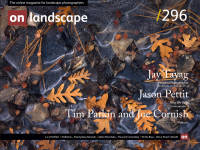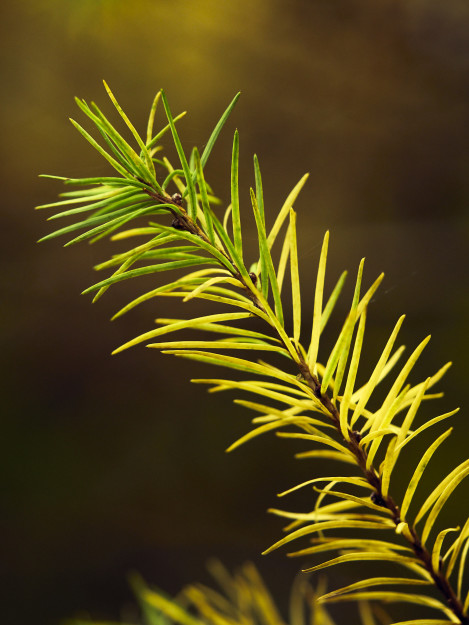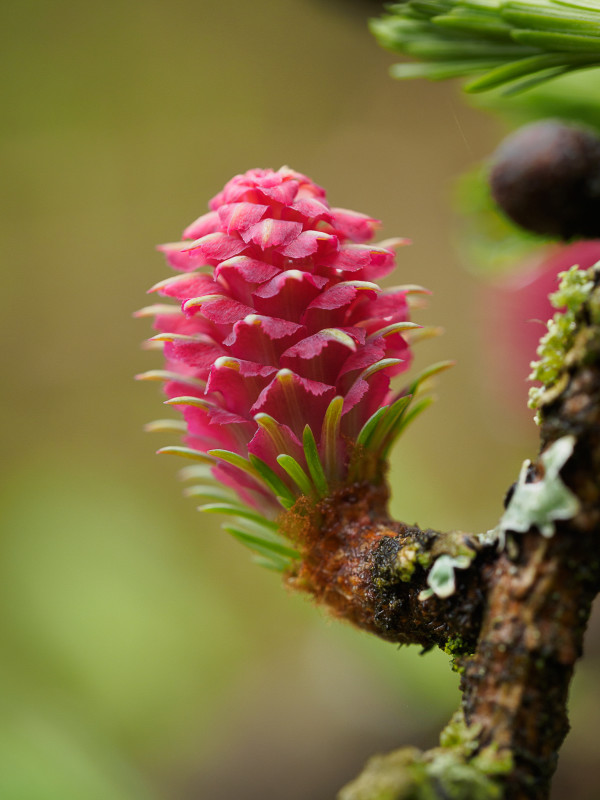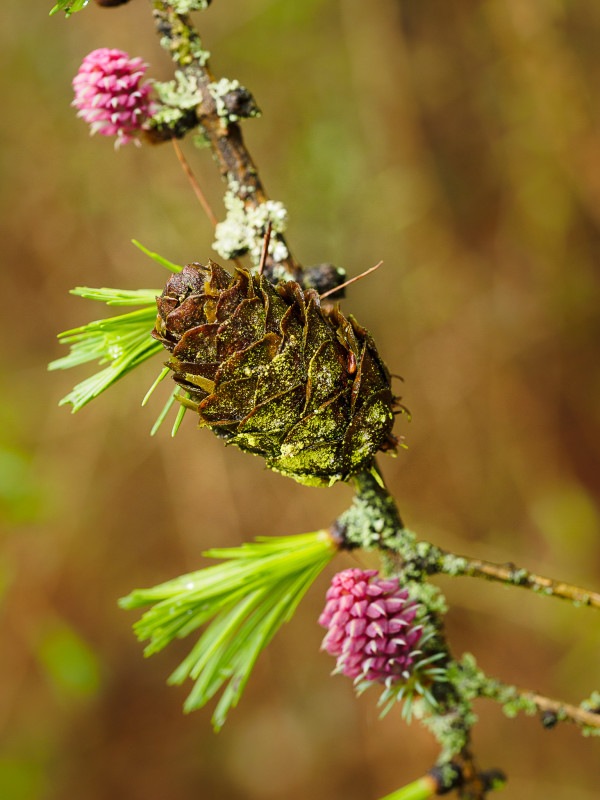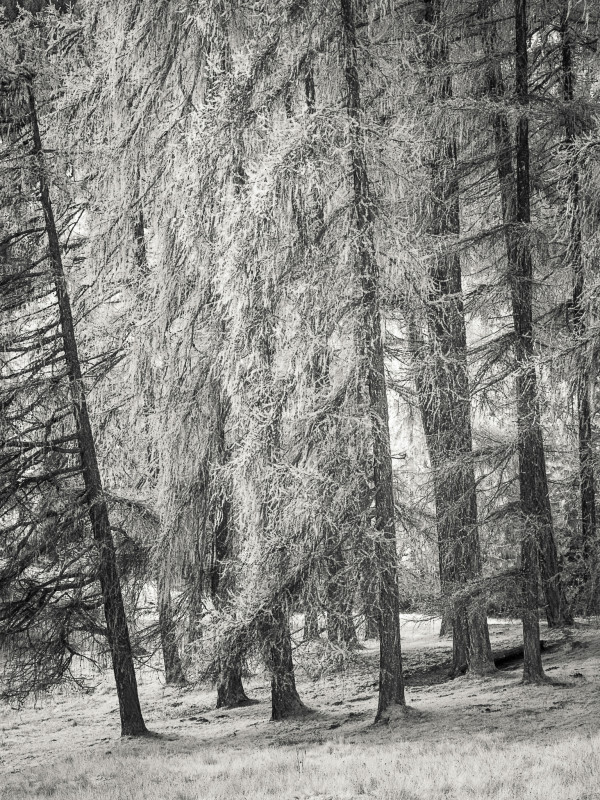The only deciduous conifer in Europe

Adam Pierzchala
Now retired, I have more time to enjoy being out with my camera looking for scenes and subjects that pique my interest, especially coastal, woodland and close-ups. Although I still have several rolls of 35mm and MF film in my freezer, I shoot almost exclusively digital now
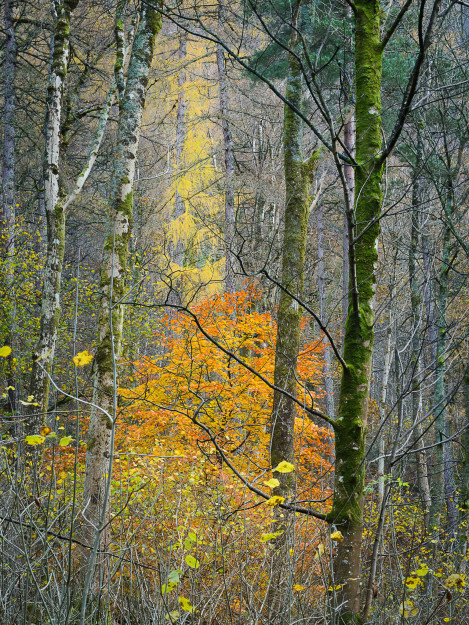
I was attracted to the yellow “cascade” of a distant larch, falling into the red-orange leaves of what I think is a young beech; Great Wood Borrowdale
A colourful beauty!
I was just 13 years old when my father first took me on a camping holiday to the Alps, and as we hiked along mountain paths, he pointed out the various trees growing on the slopes. Of course, Christmas Trees were especially exciting for a young boy to see in nature, but I also remember the Arolla (Swiss) pine with its long and sometimes curved needles and the elegant Larch. This tree - Larix decidua or European larch - is the only native European deciduous conifer, dropping its needles (actually leaves) in the autumn. There are two other European species, namely the Carpathian larch and the Poland larch.
Other larch species can be found around Europe, such as the Russian/Siberian larch and the Japanese larch, though these are not considered native. For this article, I gathered information from a variety of websites, including the Woodland Trust, Wikipedia, Forestry England and British and overseas suppliers of tree seedlings. For those who want to know more, there is an excellent and quite detailed paper here: https://forest.jrc.ec.europa.eu/media/atlas/Larix_decidua.pdf
Larch can reach typically around 20 metres but also grow to as much as 45m in height and 3-4 metres in width; it thrives in cooler parts of the northern hemisphere, e.g. forests at high latitudes and high in the mountains further south. Larches are long-lived, 250 years is usual but there have been some that lived for 1000 years and even 2000 years.
Here in Europe, larches can most often be found in the Alps, Carpathians and some forests in central-eastern Europe. Larches can withstand huge swings in temperature and survive very hard frosts; they prefer wet but well-drained soil conditions. They are susceptible to canker in wet, boggy soils. There are few places in the northern Baltic states where larches grow, possibly because of poor habitat conditions. Incidentally, here in the UK, it was introduced by the English botanist and gardener John Tradescant in the seventeenth century.
According to a BBC article from last year (https://www.bbc.co.uk/news/uk-scotland-south-scotland-62178124) all larches in south-west Scotland will be felled over the next 10 years or so, as this is the best way to combat the disease phytophthora ramorum. That’s a staggering 10 million trees!
Larches are probably best known for their beautiful golden yellow autumn colour, though later in the season, the yellow turns to orange and brown before the needles finally drop. In mountainous regions the colour varies with elevation and to what extent the trees are sheltered. Higher up the trees might be yellow whereas lower down (or in a warmer spot) the needles can still be green. In the spring the bright green shoots bear “flowers” with creamy-yellow males pointing downwards and red/pink/purple females that grow upwards.
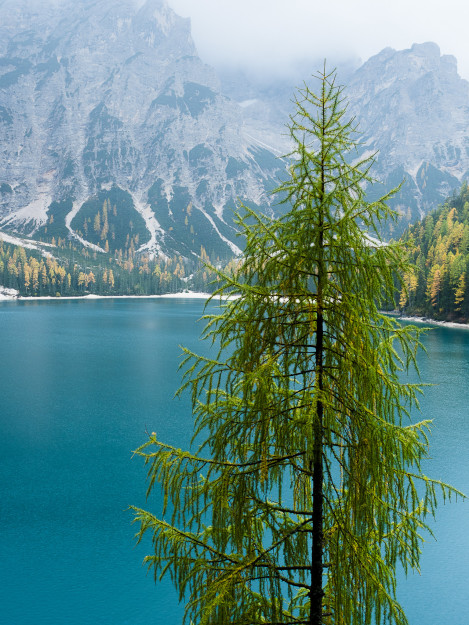
An upright larch at Lago de Braes still shows summer green needles. Some of its friends on the other bank are already yellow
Larch is generally considered to be fast growing and in forestry nurseries can be used as a wind-break to protect slower growing trees such as oak and beech. The wood of the larch is strong and is used in furniture making, boat-building, fencing, and various outdoor wooden articles, roof shingles (which can often be seen on old Alpine chalets), and other construction uses where durability is required, as well as for paper pulp. Opinions about the strength of larch vary, but apparently, those that grow in tough climatic conditions (e.g. Siberia, Canada) are indeed more than strong enough for heavy construction use. Larches can grow very straight with few lower branches, thus giving long planks almost free of knots.
The resin from larch has a variety of uses in industrial chemistry (including to make solvents), in perfumery and in medicine.
Larch trees support a variety of wildlife, including some moths and their caterpillars, birds such as capercaillie and black grouse and, according to my research around the internet, species such as siskin and lesser redpoll, which I freely admit I have never heard of!
A few of the images shown here are from the Great Wood in Borrowdale and Virginia Water in Surrey, but the majority are from the Italian Dolomites, which I visited in the autumn of 2019. Perhaps counter-intuitively, I have made a number of images of autumnal larch in mono infra-red. Although autumn colour is the main attraction, I find that the upright elegance of larches, often mixed with firs and spruces, makes for an attractive pattern of tones.
- I was attracted to the yellow “cascade” of a distant larch, falling into the red-orange leaves of what I think is a young beech; Great Wood Borrowdale
- Young shoot showing early autumn colour; Great Wood Borrowdale
- Older cone and younger female cones in the background; Virginia Water Surrey
- Young female flower-cone; Virginia Water Surrey
- An upright larch at Lago de Braes still showing summer green needles. Some of its friends on the other bank are already yellow
- Elegant larch in soft directional sunlight; Tires Village, Dolomites (infra-red)
- Elegant larch in soft directional sunlight just turning yellow; Tires Village, Dolomites
- Autumnal larch, detail; Dolomites
- Sunlit larch against the shaded dolomite of the Sella group, a huge bastion of rock; its colour comes from the blue sky above.
- Sunlit larch against the shaded dolomite of the Sella group, a huge bastion of rock; its colour comes from the blue sky above.
- Misty larch, en route to Lago Lantro
- Larches as far as the eye can see!
- Larch impressions – 1
- Larch impressions – 2
- Lago Antorno with larches and other conifers (infra-red)
- Lago Antorno & the Tre Cime di Lavaredo again with larches and other conifers (infra-red)

